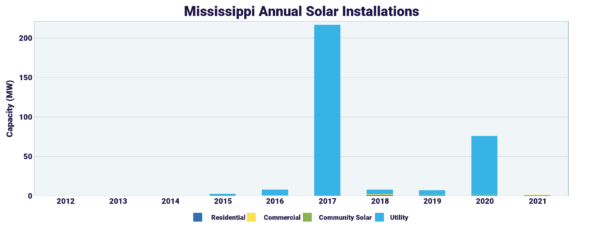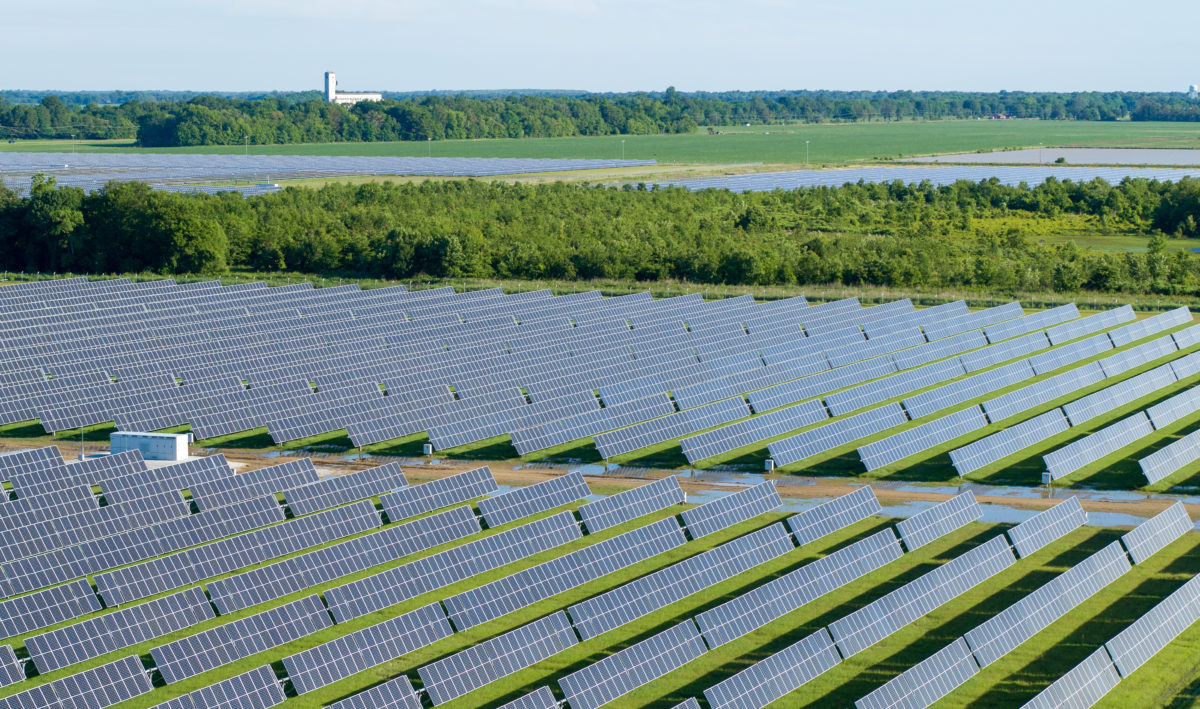The pv magazine USA tour of solar incentives last stop was Alabama, and now moves to Mississippi.
Mississippi, the Magnolia State, is the 32nd largest and 35th most populous state in the United States and ranks 37th in solar installations. The state is home to the 1.4 GW Grand Gulf Nuclear Power, the largest single-reactor nuclear power plant by generating capacity in the nation, which, according to Energy Information Administration (EIA) data, generated about 17% of the state’s electricity in 2021. The Pascagoula oil refinery, located on Mississippi’s Gulf Coast, is the nation’s 10th-largest refinery. Natural Gas is also big in Mississippi, which has about one-fourth of total U.S. underground salt cavern natural gas storage capacity. Natural gas is the primary fuel used at nine out of the 10 largest power plants in the state, supplying about 72% of Mississippi’s electricity generation 2021.
The state’s dependence on fossil fuels, coupled with relatively low-cost electricity—currently at 12.61 cents per kWh—may leave little incentive to go solar. Or does it? The state is prone to hurricanes and tornados—with 113,000 people left without power from Hurricane Ida in 2021.
The state currently has about 321 MW of solar installed, or enough to power just over 34,000 homes, according to the Solar Energy Industries Association (SEIA). Total solar investment in the state amounts to $365 million. Change may be on the horizon; however, as SEIA projects 2.3 GW to be added over the next five years, bouncing the state up to 22nd in the nation for installed solar.

In the fall of 2021, Entergy announced its intent to expand renewable energy in its territory when it launched EDGE, for “Economic Development with Green Energy,” a program that aims to replace aging natural gas facilities with 1,000 MW of renewable energy, including solar, over the next five years. This level of added capacity would increase the company’s total power generation portfolio from less than 1% to 17% in three years, and nearly 33% by 2027. Entergy expects to have 11,000 MW of renewable energy generation by the end of 2030.
Net metering
The Mississippi Public Service Commission (PSC) recently approved final amendments to the state’s net metering policy, referred to as the “Net Renewable Generation Rules”. The program aims to improve access to solar for low- and middle-income (LMI) residents.
The base net metering rate is below full retail electricity rates, at 2.5 cents per kWh over the deemed ‘avoided cost’ of solar. In this sense, avoided cost refers to the difference between the cost of solar generated by a rooftop and the cost of the utility procuring that energy from a different generation facility.
The new net metering rules also include a requirement that each of the state’s investor-owned utilities offer a one-time $3,500 upfront cash rebate to any retail residential customer purchasing a renewable distributed energy project of at least 3 kW and which provides a maximum of 110% of the customer’s expected annual usage. The PSC also added to the program meter aggregation provisions, meaning that customers with multiple meters can use energy generated by one solar or other form of distributed generation (DG) system on any eligible meter of theirs. Eligible meters must be located on the same premises or within the service area of the customers’ current electric provider.
The number of customers that may participate in net generation has also been raised, with the previous hard 3% participation cap moving up to a 4% non-hard cap.
LMI support
In 2022 Mississippi Public Service Commission approved revised distributed generation compensation, expanding eligibility for the LMI income benefits adder from 200% to 225% of the federal poverty level, creating new upfront incentive programs for LMI customers and residential battery storage, and establishing solar for schools program, as highlighted in North Carolina Clean Energy Technology Center’s The 50 States of Solar: Q3 Quarterly Report, October 2022
Landmark project
In May of this year, the Sunflower Solar Station was completed, named for the county in which it is located. Said to be the largest in the state, the 100 MW solar installation was constructed by Recurrent Energy, a subsidiary of Canadian Solar. The plant will provide enough clean energy to power 16,000 homes in Entergy Mississippi’s territory, and is one of the first utility scale solar projects to be constructed under a Build Transfer Agreement (BTA) in the United States and it is the first BTA signed by Recurrent Energy. The BTA was signed with Entergy Mississippi in 2018 designating that the utility would take ownership of the project once it began commercial operation.
With the completion of Sunflower, along with the recent state expansion by the state’s two largest utilities, Mississippi is well on its way to achieving—and possibly exceeding–SEIA’s forecast for an additional 2.3 GW in the next five years.
The next stop on the pv magazine tour of 50 states of solar incentives will be Oklahoma.
This content is protected by copyright and may not be reused. If you want to cooperate with us and would like to reuse some of our content, please contact: editors@pv-magazine.com.









Will you guys make a post category for 50 States of Solar so we can easily browse all of them?